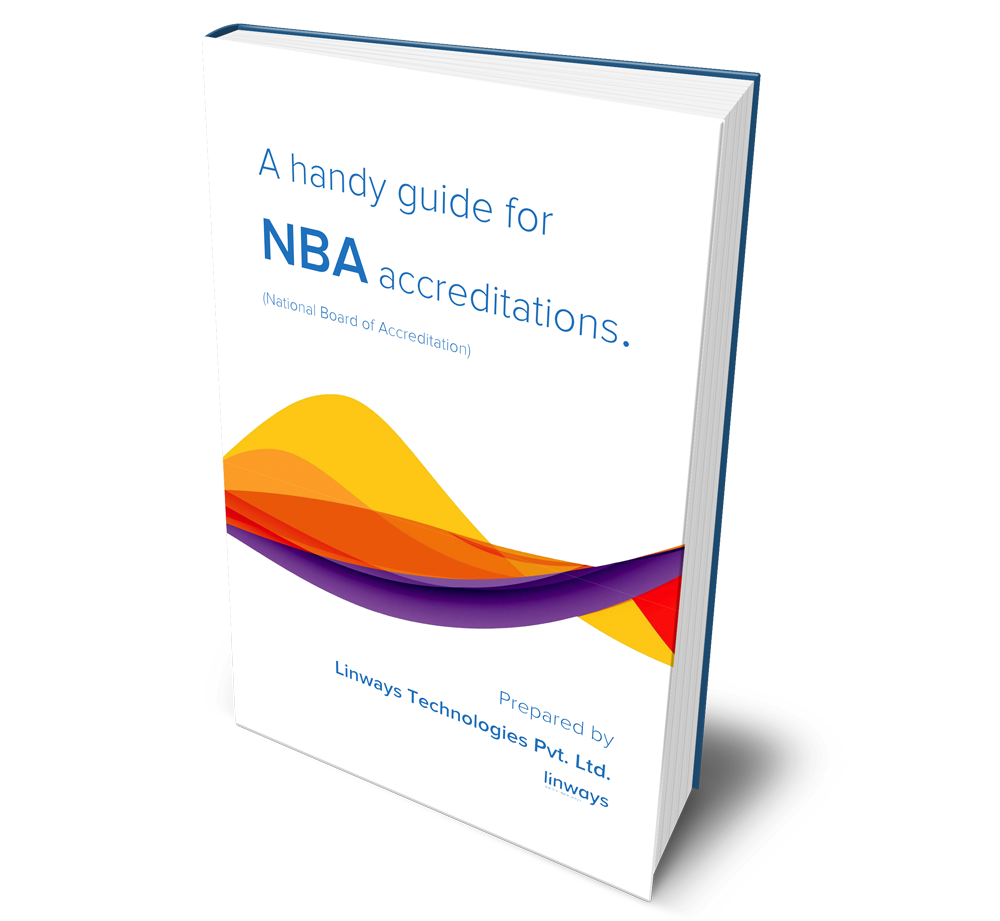Hi there. We have explained about the NIRF ranking basics in our previous blog post. We highly recommend you read that one if you haven’t already.
So let’s skip over the elementary details and let’s look closer. We learned there are 5 ranking parameters that the NIRF rely on for their ranking. They are:
- Teaching, Learning & Resources,
- Research and Professional Practice,
- Graduation Outcomes,
- Outreach and Inclusivity,
- Perception.
These parameters are rather straightforward and can be easily understood. We will look closely at each of those to learn about the deciding assessment factors and parameters that determines an NIRF rank of an institution.

Parameter 1: Teaching, Learning & Resources
- Student Strength including Doctoral Students
- Faculty-student ratio with emphasis on permanent faculty (FSR)
- Combined metric for Faculty with PhD (or equivalent) and Experience (FQE)
- Total Budget and Its Utilisation: (CBTU)
Student Strength including Doctoral Students (20 marks)
- SS = f(NT) × 15 + f(NP) × 5.
- The functions f(NT) and f(Np) are functions to be determined by NIRF. The functions will be notified at the time of announcing ranks.
- NT = Total number of students studying in the institution considering all UG and PG Programs, excluding the Ph.D program. (Calculated on the basis of approved intake over the entire duration of the respective programs. For example for a UG Engineering program, the intake over 4 years will be considered, whereas for a UG B.A. degree program, intake over 3 years is appropriate).
- Np = Total number of students enrolled for the doctoral program in the previous academic year.
Faculty-student ratio with emphasis on permanent faculty (FSR) (30 marks)
- Faculty-Student Ratio, FSR = 30 × [10 × (F/N)].
- N: Total number of students studying in the institution considering all UG and PG Programs, including the Ph.D program (N = NT + Np).
- F: Full time regular faculty in the institution in the previous year.
- Regular appointment means Faculty on Full time basis. Faculty on contract basis/adhoc basis for a period of not less than 2 years will also be considered.
- Expected ratio is 1:10 to score maximum marks.
- For F/N < 1 : 50, FSR will be set to zero.
Combined metric for Faculty with PhD (or equivalent) and Experience (FQE) (20 marks)
- FQ = 10 × (F/95) , F ≤ 95%;
- FQ = 10, F > 95%.
- Here F is the percentage of Faculty with Ph.D. (or equivalent qualification), over the previous 3 years.
F1= Fraction with Experience up to 8 years;
F2= Fraction with Experience between 8+ to 15 years;
F3= Fraction with Experience > 15 years. - FE = 3min (3F1, 1) + 3 min (3F2, 1) + 4 min (3F3, 1)
Rationale: Full marks for a ratio of 1 : 1 : 1. - FQE = FQ + FE.
Total Budget and Its Utilisation: (CBTU) (30 marks)
- FRU = 10p (BT) + 10min (4*BC/BT, 1 ) + 10min (4*BO/3BT, 1).
- BT: Total Average Annual Expenditure/student for the previous three years: (excluding expenditure on buildings).
- BC: Average Annual Capital Expenditure per student on Academic Activities and Resources: (Library, New Equipment for Laboratories, Workshops, Studios, Other suitably identified academic activities) (excluding expenditure on buildings).
- BO: Operational (or Recurring) Expenditure per student on Faculty and Staff Salaries, Maintenance of Academic Infrastructure or consumables etc. on a per student basis: (excluding maintenance of hostels and allied services).
- The function p is the percentile fraction.
Parameter 2: Research and Professional Practice
- Combined metric for Publications (PU)
- Combined metric for Quality of Publications (QP)
- IPR and Patents: Filed, Published, Granted and Licensed (IPR)
- Footprint of Projects and Professional Practice And Executive Development Programs (FPPP):
Combined metric for Publications (PU) (30 marks)
- PU = 30 × p(P/F).
- P is the number of publications = weighted average of two largest numbers given by Scopus, Web of Science, PUBMED, FT 45 (as feasible) over the previous 3 years.
- Let P1, P2 = Two largest of {PW, PS, PUBMED, FT45, …etc.}*#,
- P = 0.45P1 + 0.45P2 + 0.1PI.
- PW: Number of publications reported in Web of Science.
- PS: Number of publications reported in Scopus.
- PUBMED: Number of publications reported in PUBMED, etc.
- PI: Number of publications reported in Indian Citation Index.
- F is the nominal number of faculty members as calculated on the basis of an FSR of 1:10.
- * It is felt that PW and PS would suffice. However, if additional sources need to be considered, this computation will be done only for the top 200 institutions. For others, a nominal value based on percentiles will be used.
- # For discipline specific rankings, the sources and weights will be suitably tuned, as felt necessary.
Combined metric for Quality of Publications (QP) (40 Marks)
- QP = 15 ×p (CC/P) + 12.5 × p(NCI) + 12.5 × p(TOP25P)}.
- Here CC is Total Citation Count over previous 3 years.
- P is total number of publications over this period as computed for PU.
- CC, NCI and TOP25P computed as follows.
- CC = 0.45CCW + 0.45CCS + 0.1CCI.
- NCI = 0.5 NCIW + 0.5 NCIS.
- TOP25P = 0.5 TOP25PW + 0.5 TOP25PS.
- NCI: Field normalized citation index averaged over the previous 3 years.
- TOP25P: Number of citations in top 25 percentile averaged over the previous 3 years.
IPR and Patents: Filed, Published, Granted and Licensed (IPR) (15 marks)
- IPR = IPF + IPG + IPL.
- IPF = 3 × p(PF/F).
- PF is the number of patents filed over previous 3 years.
Primary Data for PF: Third Party Sources (Also to be collected from institutions in prescribed format as standby data). - IPG = 3 × p(PG/F).
- PG is the number of patents granted over the previous 3 years.
Primary Data for PG: Third Party Sources (Also to be collected from institutions in prescribed format as standby data). - IPP = 3 × p(PP/F).
- PP: No. of patents published.
Primary Data for PP: Third Party Sources (Also to be collected from Institutions in prescribed format as standby data). - IPL = 2 × I(P) + 4 × p(EP/F).
- EP is the total earnings from patents etc. over the last 3 years.
I(P) = 1, if at least one patent was licensed in the previous 3 years or at least one technology transferred during this period; 0 otherwise. - F is the nominal number of faculty members as calculated on the basis of an FSR of.
Footprint of Projects and Professional Practice And Executive Development Programs (FPPP) (15 marks)
- FPPP = FPR + FPC + EDP.
- FPR = 5 × p(RF).
- RF is average annual research funding earnings (amount actually received in rupees) at institute level for the previous 3 years.
- FPC = 5 × p(CF).
- CF is average annual consultancy amount (amount actually received in rupees) at institute level, for the previous 3 years.
- EDP = 5 × p(EP).
- EP = Average annual earnings from Full Time Executive Development Programs of a minimum duration of one year over previous 3 years.
Parameter 3: Graduation Outcomes
- Combined % for Placement, Higher Studies, and Entrepreneurship (GPHE)
- Metric for University Examinations: GUE
- Median Salary
- Metric for Graduating Students Admitted Into Top Universities (GTOP)
- Metric for Number of Ph.D. Students Graduated GPHD
Combined % for Placement, Higher Studies, and Entrepreneurship (GPHE) (40 marks)
- GPHE = 30 × (Np/100 +Nhs/100)+10p3
- Np = Percentage of graduating students (both at the UG and PG levels) placed through campus placement, averaged over previous 3 years.
- Nhs = Percentage of graduating students (both at the UG and PG levels) who have been selected for higher studies, averaged over the previous three years.
- p3 = p(NE)
- NE = number of sustained spin-off companies set up over the previous 5 years period.
- Primary Data for Np: To be sought from the institution in a prescribed format giving names of companies, number of students recruited by each, and the maximum, minimum, average and median salary, offered by each (required also for 3C).
- Primary Data for Nhs: To be sought from the institution in the form of a prescribed table giving names of Institutions students into which their students have been admitted (indicating the number of students in each).
- Primary Data for NE: To be sought from the institution in a prescribed format giving names of companies (along with their creators’ graduation profile) set up and sustained over the previous 5 years, in a prescribed format.
Metric for University Examinations: GUE (15 Marks)
- GUE = 15 × min [(Ng/80), 1]
- Ng is the percentage of Students (as a fraction of the approved intake), averaged over the previous 3 years, passing the respective university examinations in stipulated time for the program in which enrolled
Median Salary (20 Marks)
- GMS = 20 × p (MS)
- MS = median salary of graduates from an institution
Metric for Graduating Students Admitted Into Top Universities (GTOP) (15 marks)
- GTOP = 15 × p(ntop).
ntop = Ntop/Ng. - Ntop = Number of graduating students who were admitted into a top university for higher studies in the previous year.
- Ng = Number of graduating students in the previous year.
Metric for Number of Ph.D. Students Graduated GPHD (10 Marks)
- GPHD = 10 × p(Nphd)
- Nphd = Average number of Ph.D students graduated over the previous 3 years.
Parameter 4: Outreach and Inclusivity
- Percent Students from other states/countries (Region Diversity RD)
- Percentage of Women (WF) + (WS) + (WA)
- Economically and Socially Challenged Students (ESCS)
- Facilities for Physically Challenged Students (PCS)
Percent Students from other states/countries (Region Diversity RD) (30 marks)
- RD = 25 × fraction of total students enrolled from other states + 5 × fraction of students enrolled from other countries
Percentage of Women (WF) + (WS) + (WA) (25 marks)
- WD = 10 × (NWS/50) + 10 × (NWF/20) + 5 × (NWA/2)
- NWF and NWS are the percentage of Women Faculty and students, respectively.
- NWA is the number of women members in senior administrative positions, such as heads of Departments, Deans or Institute Heads.
- Expectation: 50% women students and 20% women faculty and 2 women members in senior administrative positions required to score maximum marks.
Economically and Socially Challenged Students (ESCS) (25 marks)
- ESCS = 25 × (Necs/50)
- Necs is the percentage of economically and socially challenged students.
- Expectation: 50% economically and socially challenged students should be admitted to score maximum marks.
Facilities for Physically Challenged Students (PCS) (20 marks)
- PCS = 20 marks, if the Institute provides full facilities for physically challenged students, as outlined.
- Else, in proportion to facilities.
Parameter 5: Perception
- Peer Perception: Employers and Research Investors (PREMP)
- Peer Perception: Academics (PRACD)
- Public Perception (PRPUB)
- Competitiveness (PRCMP)
Peer Perception: Employers and Research Investors (PREMP) ( 25 marks)
- This is to be done through a survey conducted over a large category of Institution heads, professionals from Reputed Organizations , Officials of Funding agencies in government, private sector, NGOs, etc.
- Lists may be obtained from institutions and a comprehensive list may be prepared taking into account various sectors, regions, etc.
- Lists to be updated periodically.
- This will be based on an on-line survey carried out in a time-bound fashion to ascertain preferences of employers and funding agencies.
Peer Perception: Academics (PRACD) (25 marks)
- This is to be done through a survey conducted over a large category of academics to ascertain their preference for graduates of different institutions.
- Comprehensive list will be prepared taking into account various sectors, regions, etc.
- Lists to be updated periodically.
- This will be based on an on-line survey carried out in a time-bound fashion
Public Perception (PRPUB) (25 marks)
- PRPUBLIC: Based on data collected online from general public, in response to advertisements.
- Would ascertain preference of general public for choosing institutions for their wards and friends.
Competitiveness (PRCMP) (25 marks)
- Naphd = Average Number of PG and Ph.D Students admitted each year from top institutions in the previous year.
- PRCMP = 30 × p(Naphd).
Hope you now have a firm grip on the NIRF ranking and it’s assessment/ranking metrics. Furthermore, we will discuss the relevance of the NIRF ranking and its effect on your institution in the next blog. Please subscribe to stay updated of our posts in the future.
NB: we have also published E-books and blog series on National Board of Accreditation (NBA) and National Assessment and Accreditation Council (NAAC). You can find links to them below:







